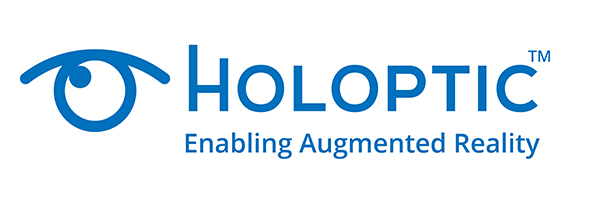The Challenge
Current augmented reality headsets are heavy, bulky, and expensive due to the use of conventional optics or expensive components produced through a semiconductor process. Current automotive and avionic heads up displays (HUDs) have a small eye box/field of view and/or support a single color.
Our Approach
Holoptic has commercialized and scaled up high volume production of holograms. We have over 15 years of experience in holography and have engineered a high-speed roll to roll replication process to enable low cost and high-performance augmented reality products. These thin, light, efficient, and transparent photopolymer films replace bulky, heavy and expensive optics. We are also able to create multiple holograms in a single film layer, enabling automotive and avionic HUD manufacturers to display bright multi-color images.
Benefits
The benefits of holograms are shown below:
| Feature | Benefit |
| Light | Comfortable headset/smart glasses |
| Not bulky | Stylish |
| Transparent | Not visible to wearer and audience |
| Cost effective | Enables lower price points for headset manufacturer |
| Roll to Roll Process | Lower cost and higher consistency product |
Competitors/alternatives
The augmented reality landscape is shown below:

Most manufactures are currently using conventional optics or waveguides based on surface relief structures created using a semiconductor process. Holoptic technology (HoloCore) has already been successfully incorporated in the most stylistic and lightest smart glasses on the market, Focals by North:
Background
Holoptic is a formal spin-off from Luminit, a highly successful optics technology firm that has been involved in holographic displays for over 15 years. Luminit itself is a spin-off from Physical Optics Corporation (POC), the most successful SBIR funded firm serving military and defense, homeland security, and selected commercial markets. Since its founding in 1985, POC has grown to $113M in revenue, with over 270 employees, including 30 Ph.D.’s and 112 engineers.
